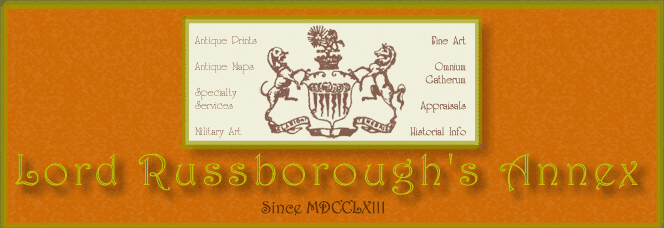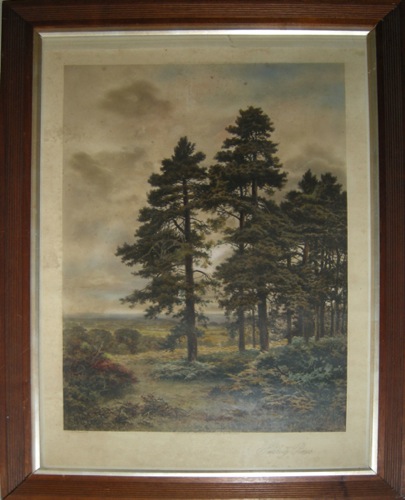Original hand-tinted 'La Chine colle' photogravure Published by Frost and Reid, Bristol & London 1917, after the 1916 painting by Leader. Some age browing, original glazing, period mahogany frame.
25 3/4 x 16 3/4" including letters (65.5 42.5 cm) Frame: 33 x24 1/2"
Ref. LRA 766 /DNN/e.dooo >EOL PRICE CODE C SOLD
Click here for printing technique Click here for price codes
Designated (in 1958) as an Area of Outstanding Natural Beauty the Surrey Hills offer some of South East England's most beautiful and accessible countryside. The nearby location was recently used as a location shoot for the film Clash of the Titans II.
Benjamin Williams Leader RA. 1831-1923 was an English landscape artist. Born Benjamin Williams, in Worcester he added the surname Leader to distinguish himself from the Williams family of artists to whom he was not related. He studied at the Royal Academy and exhibited there from 1857 to 1922. He also showed work at the British Institute and at Suffolk Street. Leader did not finish his course of studies at the R. A, nor did he need to – his paintings proved to be in great demand by wealthy buyers and he achieved an enviable degree of commercial success within only a few years of his first sale.
In 1857 he changed his name to Benjamin Williams Leader to distinguish himself from the many other painters with the surname Williams. 1859 saw four of his paintings hung at the Academy and all sold, one of the buyers being the art dealer Agnew's who bought much of his work during his lifetime. Such was the demand that much of his best work now went to private galleries and was never publicly exhibited.
For the next 10 years, Leader divided his time painting between the Severn Valley, Worcestershire, and Wales, producing many canvases. In 1862 he moved home from Worcester to nearby Whittington (where he lived until 1889), which became a favourite sketching ground. In August 1876, Leader married fellow artist Mary Eastlake (born c. 1852) and they went on to have six children. Leader was made an associate (ARA) in 1883, becoming a Royal Academician (RA) in 1898.
Leader’s works have always been admired for their literalness and truth to nature. His subjects were usually set in Scotland or the Midlands, but he was especially fond of the landscape around Bettws-y-Coed, Wales. Leader was considered a master at capturing the British Victorian landscape and as such, became extremely popular during his lifetime. He is chiefly known for the tranquility and warmth of his works, such as this fine example, which he painted at the beginning of the twentieth cent.
‘Surrey Pines’ is a painting of the pine trees near Leader’s home in Burrows Cross. In 1889, the family moved to "Burrows Cross", Shere near Guildford, Surrey, a large mansion designed by Norman Shaw RA – Leader lived here until the end of his life.
Leader is represented in the Victoria & Albert Museum and the Tate Gallery, London and in museums in Bristol, Reading, Liverpool and Melbourne.
This is an original La Chine colle pull of this image, not a later restrike.














